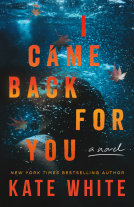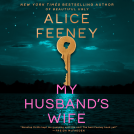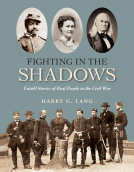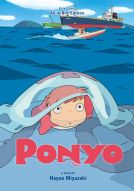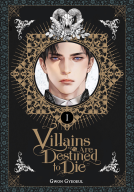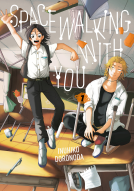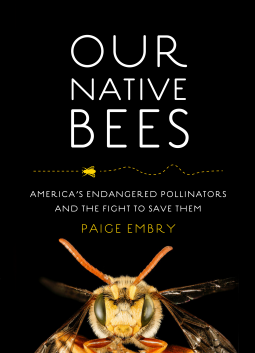
Our Native Bees
North America’s Endangered Pollinators and the Fight to Save Them
by Paige Embry
This title was previously available on NetGalley and is now archived.
Send NetGalley books directly to your Kindle or Kindle app
1
To read on a Kindle or Kindle app, please add kindle@netgalley.com as an approved email address to receive files in your Amazon account. Click here for step-by-step instructions.
2
Also find your Kindle email address within your Amazon account, and enter it here.
Pub Date Feb 07 2018 | Archive Date Jan 10 2019
Description
Honey bees get all the press, but the fascinating story of North America’s native bees—endangered species essential to our ecosystems and food supplies—is just as crucial. Through interviews with farmers, gardeners, scientists, and bee experts, Our Native Bees explores the importance of native bees and focuses on why they play a key role in gardening and agriculture. The people and stories are compelling: Paige Embry goes on a bee hunt with the world expert on the likely extinct Franklin’s bumble bee, raises blue orchard bees in her refrigerator, and learns about an organization that turns the out-of-play areas in golf courses into pollinator habitats. Our Native Bees is a fascinating, must-read for fans of natural history and science and anyone curious about bees.
Available Editions
| EDITION | Other Format |
| ISBN | 9781604697698 |
| PRICE | $28.00 (USD) |
| PAGES | 240 |
Average rating from 16 members
Featured Reviews
 Lola J, Reviewer
Lola J, Reviewer
‘North America’s endangered pollinators and the fight to save them.’
I wanted to read this book as soon as I saw it. I love nature and I love bees. The connection between earth’s diversity and bees has always intrigued me and this book seemed right up my street.
I really connected with the way this book is written. The writing is casual and does not assume prior knowledge. It is written in layman’s terms and anyone would be able to get on with this book. It is beautiful images of all sorts of bees and other insects.
The author’s love for bees shines through and as her knowledge of bees grows, so does ours. It made me want to keep a closer eye on the bees that zoom about in my garden (on a different continent).
This book looks at the efforts it takes to grow some of the foods that end up on your table and how bees are connected to them. It also touches on how you could improve your world to be a better place for bees to be. Also, I never knew that there were so many different types of bee.
I thoroughly enjoyed this book and I will be looking to get a physical copy when it is published in January 2018, partly to take a better look at those gorgeous photographs.
 David W, Media/Journalist
David W, Media/Journalist
Beeing Paige Embrey
Bee lover s are set for life. There are so many native varieties and we know so very little about them, that anyone interested can devote a lifetime to learning, and teaching the rest of us. Pretty much anyone can add to the knowledge base, just by observing and reporting. Our Native Bees is a voyage of discovery rather than a science book. Lots of great photos right where you need them, too.
Bees are not just hive residents; that’s a honeybee trait. And honeybees are European imports. Native bees seem to be mostly solitary and earth/hole dwellers. They come in a blizzard of colors and sizes, from smaller than grain of rice to a full inch. They have unique properties and habits, and have peculiarities and preferences in climate, foods and child rearing. There are four thousand native species of bee and 20,000 worldwide. Typically, we can name a handful at best.
We depend on the Paige Embreys of the world to catalog it all, because bees are just not a zoological priority for scientists. Embrey says bees have broken her out of her own introspective cocoon, and this book has forced her to fly and drive far to meet the bee-loving celebrities and experts. Her enthusiasm is genuine and infectious. She has learned a ton, and is sharing it. On the other hand, she is clearly obsessive.
Bees are beset by all kinds of problems, not all of them manmade, though the manmade ones are truly unfortunate. Monocultures mean bees only get food while that one pant blooms. The rest of the year is a famine. Golf courses and manicured lawns are no help either, though the pesticide maker Syngenta is working with golf courses to line them with natural greenery outside the playing area. Pesticides don’t select to save bees, and we overspray something fierce. We need to just ease up and share the planet a little. It will pay huge dividends. The alternative is a well-known and predicted disaster for our food sources.
And it turns out Melissa is Greek for honeybee.
David Wineberg
 Rosemary S, Librarian
Rosemary S, Librarian
I love bees! I love the sound they make in my honeysuckle bush, the fact that they are the harbingers of warm weather after an endless winter, and that they graciously provide me with all the fruits and vegetables I care to eat. There has been a lot of attention to the colony collapse of honey bees, a frightening and sobering fact to be sure, but what about those fuzzy little guys who don’t get their pictures on the front of magazines and newspapers? Embry explore the world of native North American bees (and there are lots of them). I was fascinated with all the types and last night I found myself looking a lot more carefully at the bees in my garden. A thoughtful, entertaining and informative read
 Andrew J, Reviewer
Andrew J, Reviewer
The world of insects has become a fascination of mine recently. There is a direct connection between this world that many view as just pests and us. A healthy insect ecosystem bring us our fruits and vegetables among other things. All because of the essential role of pollination. Thus my interest in bees.
Our Native Bees helps us to understand the difference between HoneyBees, which are not native to the Americas, and native bees, such as Mason Bees. Why Native Bees are much better pollinators, in general, to HoneyBees. The necessity of year round forage for the bees. Paige Embry has made all of this accessible. Like a good teacher Paige Embry walks us through the fields, literally and figuratively, while introducing us to the experts. If you have an interest in bees or just nature itself this book is a fascinating read.
I wish to thank Paige Embry, the Publisher, and Netgalley for my review copy.
 Gaby F, Educator
Gaby F, Educator
When I hear the word bees I automatically think of honey bees who pollinate our crops and give us honey. Little did I think about our native bees, who industriously pollinate a wide array of plants, some of which even cannot be pollinated by honey bees. Like the honey bee, the native bees face a lot of environmental, often man-made, challenges. Although they do not give us honey, Paige Embry shows us why the survival of our native bees is of vital importance. She gives examples how they can be successfully used in crop pollination and points out how much they are affected by the use of pesticides. She also argues for giving our native bees more space for survival by including bee friendly plantings and nesting opportunities into our landscapes. Paige Embry gives our native bees a voice. Her book is a good starting point to find out about these interesting insects and the references at the end of the book open the door to deeper exploration.
 Librarian 182823
Librarian 182823
We hear lots about the plight of the honeybee, and they are important – but so are native bees. To quote the introduction: “In 2015, when President Barrack Obama’s White House issued a plan to restore 7 million acres of land for pollinators and more than double the research budget for them, it was called The National Strategy to Promote the Health of Honey Bees and Other Pollinators. Four thousand species of native bees, not to mention birds, bats, flies, wasps, beetles, moths and butterflies, reduced to other pollinators. Sigh.” This is a fascinating study of little known native bees and their place in global ecology, written in a very accessible style. Learn more about bees and what gardeners can do for them. And keep an eye out for those cute little Andrena species bees – they are stingless!
From the publisher: Honey bees get all the press, but the fascinating story of North America’s native bees—an endangered species essential to our ecosystems and food supplies—is just as crucial. Through interviews with farmers, gardeners, scientists, and bee experts, Paige Embry explores the importance of native bees and focuses on why they play a key role in gardening and agriculture. The people and stories are compelling: Embry goes on a bee hunt with the world expert on the likely extinct Franklin’s bumble bee, raises blue orchard bees in her refrigerator, and learns about an organization that turns the out-of-play areas in golf courses into pollinator habitats.
Our Native Bees is a fascinating book about Native American bees. I was afraid Our Native Bees would cover information I already knew, especially when it started off talking about honey bees. However, as the book went on I learned all kinds of interesting stuff about native bees. It's amazing how many varieties there are and how much they accomplish. I am not a scientist, but it seemed very well researched to me.
One of my favorite parts was this quote about honey bees:
Honey bees are the bankers of the bee world, working short hours and taking all the holidays off. If it’s raining, they go home. Too cold? They don’t even leave the hive. [Blue orchard bees] BOBs, on the other hand, start flying as soon as their body temperature warms up to 54 degrees F, so the ambient temperature can be considerably less if it’s a sunny day. Now, bumble bees will fly in bad weather, but their prime season comes later in the year. In early spring with the BOBs first come out, the only bumble bees alive and possibly out gathering are last year’s queens-to-be, and there aren’t going to be enough of them to pollinate an orchard (p. 64 of the advance reader copy)
Highly recommended for those interested in bees, insects, the environment, and wildlife.
I read an advance reader copy of Our Native Bees. I look forward to seeing the actual book and admiring the many bee photos in color instead of black and white.
You can help pollinators by participating in the citizen science project The Great Sunflower Project: https://www.greatsunflower.org/Pollinator_Plants
 Jennifer S, Bookseller
Jennifer S, Bookseller
This book is SO IMPORTANT. I'm starting to get more and more into sustainability. How we as humanity can be good stewards of the land and natural resources so we don't kill the planet and starve ourselves out of existence. I'm honestly more concerned for the animals, plants and other natural things, because I am concerned that when we go, we're going to take everything else out with us. Which really isn't fair for everything else.
But I digress.
This book is SUPER important because bees. Because pollination is responsible for most of the food that we eat and most of the nutrients in it. Because honey bees are just the TIP of the iceberg when it comes to pollinators.
Did you know that North America has 4,000 different types of bees? Did you know that honey bees are a European import? Did you know that as pollinators, honey bees don't even come CLOSE to the native bees such as bumble bees? Did you know, that if we lost pollinators, we would basically all be in BIIIIIG trouble?
Yeah, me neither. But now I do. And I am TERRIFIED and also awed. Seriously, bees are that awesome? Most don't sting either. AND THEY HAVE TOES!!!! (sorry, lighting bug flashback! But it IS true.)
I don't want to go on and on and on about how great this book is, so I'm just going to tell you it is a 5 star and go get it, read it and do your part to help bees do their thing so we can keep on eating. :)
Only slight neg for the book, some of the pictures weren't very clear on my eReader, so I would probably recommend going "real" book route for this one. It's one you will probably want to reference more than once anyway, so worth the shelf space!
My thanks to NetGalley and Timber Press for an eARC copy of this book to read and review.
 Barb W, Reviewer
Barb W, Reviewer
Everyone who pays much attention to the world around them knows that bees are essential to the continued livelihood of most of the plant life in the world today. But to be honest, I've never really given much thought to the *kind of bees that are buzzing around out there. Before reading this book, it never really registered that there are many more species of bees than just the honeybee and the bumblebee.
The author of this book began with a simple discovery : Europen-import honey bees can't pollinate tomatoes. This realization led her into a full-blown odyssey of reading, taking classes, even raising bees herself, and she has shared what she learned with her readers. While this sometimes got a little more technical than I would have liked, I found the book overall to be fascinating and enlightening. The included photos are great, and many were informative as well. Who knew that there are fuzzy, striped flies that look like bumblebees?
I'm glad I took the time to read this book and have already recommended it to my daughter, who is a bee lover, and other friends who are into nature and the preservation of species.
 Susannah R, Reviewer
Susannah R, Reviewer
As a biologist my first impressions of this book were two-fold: 1) I was thrilled to see a book on native bees, after honeybees have been hogging the spotlight for all these years, and 2) I was a bit skeptical that a non-biologist non-journalist was taking on this subject. But Paige Embry totally delivers with Our Native Bees. The format includes quite a few sidebars and lots of beautiful photos of bees and flowers, so it is a gorgeous book with lots of interest. Embry really follows her curiosity in the way of an investigative journalist, and each chapter reads like a really excellent long-form piece of journalism that you might find in National Geographic or the New Yorker. She addresses honeybees right off the bat in their own chapter, since they're the elephant in the room, then moves on to chapters on North American native bees. Her interest mostly arose from gardening, but her background is in geology and she has a scientific mind that follows the questions that bring out some really great stories about these species. The target audience for this book is really the public, I think anyone who is curious about nature and loves a good story will enjoy this book. I think even people who wouldn't call themselves naturalists would enjoy it, though obviously naturalists will love it. I was so surprised by how absorbed I got in this book! The issue of native bees is so important but has really been pushed to the back burner, and I am thrilled that this riveting book is out and is NOT BORING. Luckily Amazon seems to have an extensive preview on their site (pro tip: you can get longer previews if you click on the hard copy rather than the Kindle version!) so you can verify this for yourself.
Bees are SO INTERESTING. They are so complex and strange and alien, but they are everywhere. I hope that people find this book and really look at bees closely.
5/5 stars.
I am grateful to Netgalley and Workman Publishing for providing a free electronic copy of this book. My opinions are my own.
 Educator 238757
Educator 238757
After hearing for years about the collapse of honeybee hives, I began gaining an interest in pollinators and butterflies in particular. However, last summer, we had several holes in the ground on our property where bees were seen flying in and out, and we discovered the existence of native bees. Who knew?!?!
This book is gorgeous. Page after page is filled with stunning photography and jam-packed with information. A non-bug person will enjoy it, and a bug person will be thrilled with it! I learned so much, and I’m grateful for the accessible knowledge. I am more motivated than ever to plant a pollinator garden and to provide housing for native bees.
I gratefully received this book as an eARC from the author, publisher, and NetGalley in exchange for my unbiased review.
 Marzie K, Reviewer
Marzie K, Reviewer
My fascination with bees dates back to my childhood. My mother's family were gardeners and my mother lavished special garden-love on pollinators. Thus, I was lucky to have seen a variety of bees that were not the common honeybee from an early age. My favorites were the leafcutter bees, neatly excising circles from rose leaves, flying away laden with their prizes. I could spend hours watching bees zoom around our garden, getting steadily more loaded with pollen. I remember declaring at age eleven that I wanted to have my own beehive (scoffed at by my father due to my bee sting allergy issues) but it wasn't until much later that I realized most of my favorite bees were actually solitary ones. I was lucky to have seen a variety of native bees that were not the common honeybee. But sadly in recent years they've been harder to find.
In the past decade we've also seen conflicting reasons given for the sudden disappearance or die-off of millions of honeybees that we need to pollinate our country's food crops. Actual causality (pesticides, viruses, parasites, cell phones, global warming) has been confusing, contradictory and has often been minimized. What has become clear is that honeybees cannot be the sole pollinator we rely on. Indeed, before the era of industrial farming, plants like apples, pears, blueberries and potatoes, relied on solitary bees and bumblebees as common pollinators. You've likely seen bumblebees but may wonder about solitary bees? Unlike eusocial honeybees (which produce honey and beeswax for their hives) and bumblebees which live in large hive colonies with well-organized jobs, solitary bees form solitary smaller communities. They are some of the bees you are used to seeing in your garden if you have pollen-producing plants. They are part of the class of native bees and a good guidebook on bees (I like the 2015 edition of <a href="The Bees in Your Backyard: A Guide to North America's Bees">The Bees in Your Backyard: A Guide to North America's Bees</a> by Wilson and Carril) will help you start to learn to distinguish them. This book will help you sustain your native bee population and it's a wonderful resource for the bee lover.
Native bees, which include everything from mason or orchard bees to leafcutter bees (which have provided me with my most vivid childhood memories of gardening) to the bunchy and buzzy bumblebee, can provide vital relief for the stressed honeybee population. But only if we <i>feed</i> them, manage our gardens in a way that supports them, and provide them with the shelter they need. Am I telling you this book is all about how to have more bees in your garden? You bet! One of the best things about native bees is that unlike the honeybee population they are seldom if ever aggressive. They even include a class called stingless bees! These are bees that you want to promote in your garden but you definitely have to know how to do so. It's more than just planting bee balm, borage, and sunflowers!
This book describes how gardening and mechanized farming practices have changed over the past century, and where this has harmed or stressed the native bee population. This isn't just a story about large-scale farming being a bad thing. It can be as simple an issue as how you handle things in your own backyard. For instance, I have wild blueberry bushes growing at my home in New Hampshire. Every other year these bushes were getting pruned or even mowed to the ground, to foster the new growth required to produce new berries. However, it turns out that the older practice of burning back the bushes in small patches fostered better conditions for the wild bees that pollinate the blueberries. Pollen from genetically diverse blueberry plants is a requirement for production of fruit and we've been seeing less and less fruit in recent years in my yard. It turns out that many of the blueberry pollinators are tiny bees that have no internal temperature regulation. The blackened earth from burning back absorbs more radiant heat on cooler days and is helpful for the tiny blueberry bees. While bees like the scorched earth they won't travel far from, however. So burning a wide swath all at once removes what the bees need to survive in your blueberry patch- a nearby plant and some dark, warm earth. <i>Our Native Bees</i> is filled throughout with such details. It will help your fruit and vegetable production and help your bee population. I strongly recommend this book for anyone who gardens for vegetables, fruits or even flowers.
 Educator 317339
Educator 317339
This is a beautiful book teaching about native bees. Books on honeybees abound (and they ARE important) but it is so nice to see native bees in the spotlight. I am certain that my students would like this book and learn a lot!
 Erin D, Librarian
Erin D, Librarian
This is a very intriguing read for those of us who are a bit obsessed with bees! I read anything I can get my hands on with this topic and I appreciate the amount of research that went into it.
Readers who liked this book also liked:
Created by Hayao Miyazaki
Comics, Graphic Novels, Manga
A Film by Hayao Miyazaki
Children's Fiction, Comics, Graphic Novels, Manga
Noam Chomsky; José Mujica; Saúl Alvídrez
Essays & Collections, Multicultural Interest, Politics & Current Affairs


